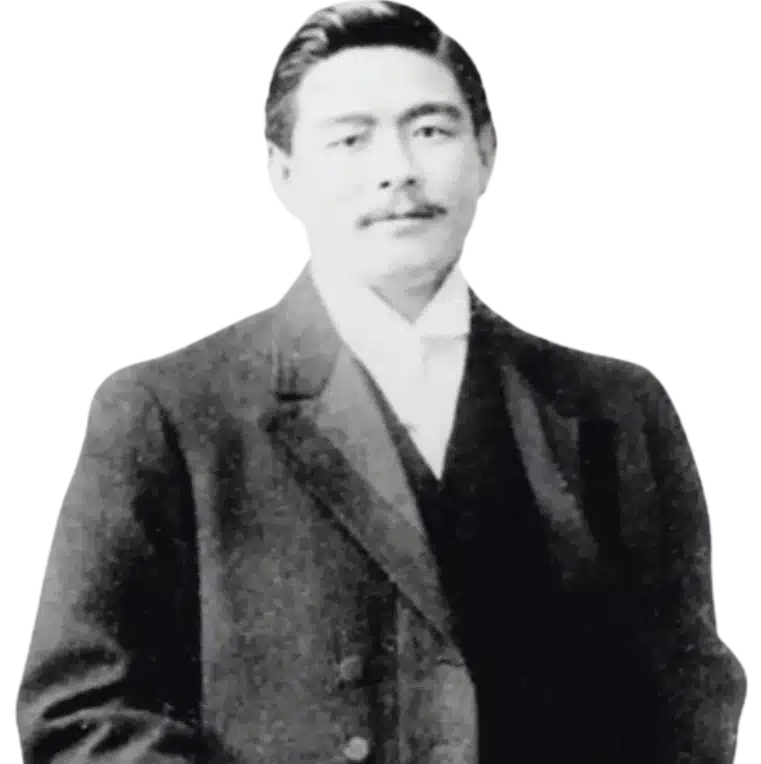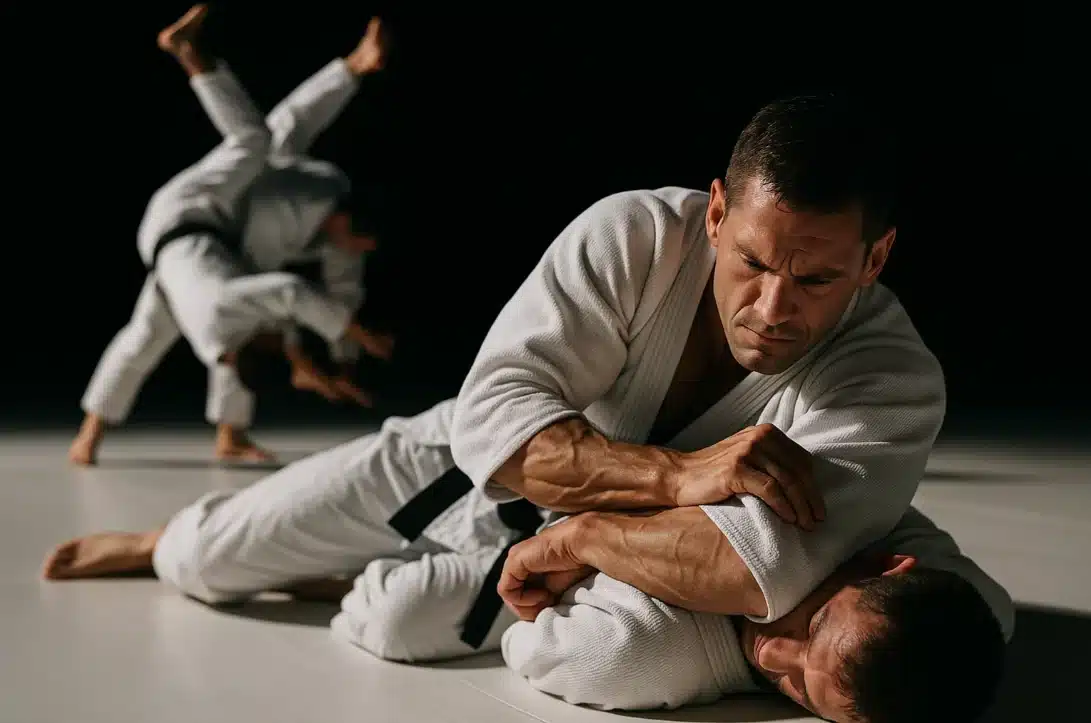Jiu Jitsu and Judo are both powerful grappling arts that trace their lineage to feudal Japan, but they have evolved into distinct disciplines with different philosophies, techniques, and goals. Understanding these differences is the key to choosing the martial art that’s right for you.
The fundamental distinction lies in their primary focus: Judo emphasizes powerful throws and standing combat to achieve a quick, decisive victory. In contrast, Brazilian Jiu-Jitsu (BJJ) focuses on ground fighting, utilizing leverage, positional control, and submission holds to defeat an opponent through strategic patience.
This core difference influences everything from their competition rules and training methods to their self-defense applications.

From Samurai Warriors to Global Sports: A Shared History
The story of these two martial arts begins with traditional Japanese Jujutsu, a battlefield art developed for samurai. In 1882, a visionary named Kanō Jigorō created Judo by systematizing techniques from various jujutsu schools. His goal was to develop a dō, or “way of life,” that could be practiced safely as both a form of physical education and a competitive sport.
Brazilian Jiu Jitsu took a different path. In the early 20th century, one of Kanō’s top students, Mitsuyo Maeda, traveled to Brazil and taught the art to the Gracie family. Led by brothers Carlos and Hélio Gracie, the family relentlessly tested and refined the techniques in real-world challenge matches. As detailed in the history of Brazilian Jiu-Jitsu belt rankings, the art was adapted to focus heavily on ground fighting, creating a system where a smaller, weaker person could defeat a larger opponent.
The Fight’s Focus: Standing vs. Ground
The most significant divergence between Judo and BJJ is where the fight predominantly takes place.
Judo: The Way of the Throw
Judo is a game of explosive, upright action. A judoka’s primary goal is to grip their opponent’s uniform (gi), break their balance (kuzushi), and execute a powerful throw for an ippon (a perfect score that wins the match). The judo stance involves a lead leg to maintain balance while using the hands to disrupt the opponent’s posture. Groundwork exists but is limited; if progress stalls on the mat for more than a few seconds, the referee resets the match to a standing position.
Brazilian Jiu-Jitsu: The Art of the Ground
BJJ, on the other hand, treats the standing phase primarily as a gateway to the ground. Practitioners often “pull guard,” intentionally taking the fight to the mat where they can use their legs and hips to control an opponent from their back. The match then becomes a strategic battle for positional dominance, moving through a hierarchy of control (side control, mount, back control) to set up a submission.

Core Techniques and Strategies
Each art’s technical arsenal reflects its core philosophy.
In Judo, the curriculum is built around:
- Nage-waza (Throwing Techniques): These are the heart of Judo. Throws like the O Goshi (major hip throw), Seoi Nage (shoulder throw), and Uchi Mata (inner thigh throw) are central.
- Osaekomi-waza (Holding Techniques): Pinning an opponent on their back for a set amount of time can also win a match.
- Ukemi (Break-fall Techniques): Learning to fall safely is the first and most crucial skill in Judo, as it allows judokas to be thrown thousands of times without injury.
In Brazilian Jiu-Jitsu, the focus is on:
- Submissions: The ultimate goal is to force a “tap out” through joint locks (like the armbar and kimura) or chokeholds (like the rear-naked choke and triangle choke).
- Positional Control: BJJ is often referred to as “physical chess.” Practitioners learn to navigate a complex system of guards, passes, and dominant positions.
- Leverage and Timing: BJJ places a strong emphasis on utilizing leverage to overcome size and strength discrepancies, allowing a smaller person to control a larger one effectively.
Competition: Rules Shape the Style
The rules of competition highlight the fundamental divide between the two arts.
| Aspect | Judo | Brazilian Jiu-Jitsu (BJJ) |
|---|---|---|
| Primary Goal | Score an Ippon (perfect throw) for an instant win. | Achieve a submission to end the match. |
| Main Arena | Standing (Tachi-waza) | Ground (Ne-waza) |
| Ground Time | Limited to 5-7 seconds if action stalls. | Unlimited ground engagement. |
| Pace | Explosive and fast-paced with frequent resets. | Methodical and strategic, often with long ground exchanges. |
| Leg Grabs | Banned in modern competition. | Permitted and integral to the art. |
| Match Length | Typically shorter (around 4 minutes). | Can be longer (up to 10 minutes for advanced belts). |
Self-Defense: Which is More Effective?
For self-defense, both arts offer immense value, but their strengths lie in different scenarios.
Judo’s focus on throws is excellent for creating distance and escaping a dangerous situation. Being able to throw an attacker to the ground and run is a highly effective self-defense tactic. Its standing-based nature is also advantageous when dealing with multiple attackers.
BJJ was developed explicitly as a self-defense system for one-on-one confrontations. If a fight goes to the ground—as many do—BJJ provides a clear roadmap for controlling and neutralizing a threat without necessarily having to throw punches. Its emphasis on leverage makes it a great equalizer against a larger, stronger attacker.
However, a key limitation for both is the lack of striking defense.
Training and Physical Demands
The physical requirements for each art are as distinct as their techniques.
- Judo develops explosive power, grip strength, and dynamic balance. Training involves many repetitions of throws and short, high-intensity sparring rounds (randori).
- Brazilian Jiu-Jitsu cultivates cardiovascular endurance, flexibility, and muscular stamina. Training features long, continuous sparring sessions (“rolling”) that challenge a practitioner’s problem-solving skills under pressure. The aerobic focus is a significant component of its conditioning.
Which Martial Art Should You Choose: Jiu Jitsu vs Judo?
While they share a common ancestor, Judo and Jiu Jitsu offer different paths. The right choice depends entirely on your personal goals.
Choose Judo if:
- You are interested in powerful, athletic throws.
- You enjoy fast-paced, explosive action.
- You want to compete in an Olympic sport.
- Your goal is to develop balance and the ability to control an opponent from a standing position.
Choose Brazilian Jiu-Jitsu if:
- You are drawn to the strategic and problem-solving aspects of ground fighting.
- You want to focus on submissions like joint locks and chokes.
- Your primary goal is self-defense in a one-on-one scenario.
- You want a system where leverage and technique can consistently overcome size and strength.
Ultimately, both Judo and Jiu Jitsu offer incredible physical and mental benefits, fostering discipline, confidence, and a lifelong passion for the martial arts.




